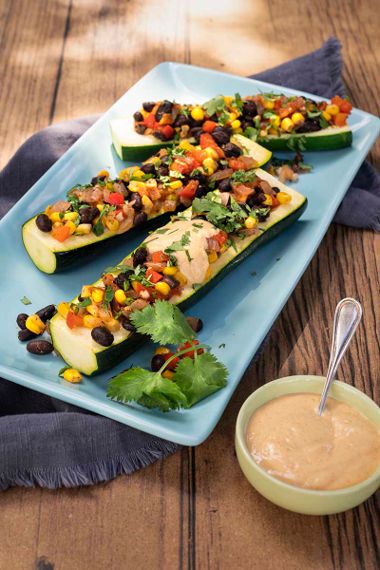Get Stuffed
We all know that we should be eating more vegetables. After all, they’re flush with the micronutrients and antioxidants we need for healthy aging. But let’s be frank, they’re often not the most exciting thing on your dinner plate. Steamed broccoli and dressing-drenched salads can get stale. So, if there was ever a food group ripe for reinvention, it’s veggies.
A tasty way to breathe new life into the vegetables on your menu is to stuff more in—literally. And while many of us are focusing our minds on the perfect stuffing for our Thanksgiving turkey, now’s also a good time to talk stuffed veggies.
Some stuffed vegetables can seem a bit gimmicky, but when done right, they’re a perfect way to make veggies the well-deserving star of <any> meal. Most likely candidates such as eggplant, peppers, and giant mushrooms can serve as ultra-nutritious bases for a range of inspiring fillings.
The key is to make sure the vegetable elevates the flavour profile of the finished dish and doesn’t just play the role of hollowed-out shell, serving as little more than a receptacle for stuffing. These recipes overhaul the whole concept of vegetables bursting at the seams and hold their own as crowd-pleasing main courses—perhaps even for your Thanksgiving feast!
Chemical cuisine
In recent times, there has been a raft of research demonstrating that the more vegetables we eat, the greater the chances for living a longer, healthier life. For instance, a recent study published in the journal Circulation found that three daily servings of vegetables (and two servings of fruit) could reduce mortality risk and the chances for cardiovascular disease, cancer, and respiratory illness.
One reason eating more veggies can lower the risk for several chronic diseases and help promote longevity is that they’re a leading source of antioxidants. These natural plant chemicals are designed to quash free radicals, substances that can damage cells and genetic material.
There are hundreds, probably thousands, of different substances that can act as antioxidants; each one has unique chemical behaviours and biological properties. Many of them can be found in vegetables of different colours such as peppers, carrots, and leafy greens. But even not-so-bright options such as mushrooms and onions harbour an antioxidant punch.











